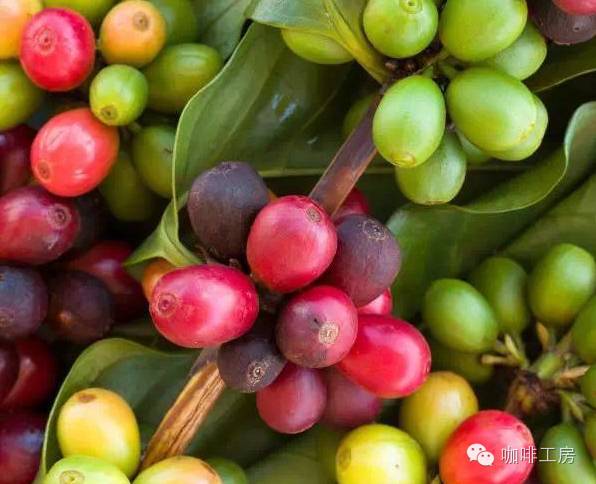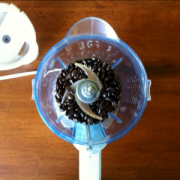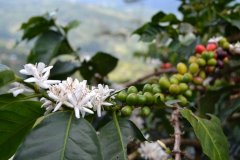What are green coffee beans and why are green coffee beans so popular? What are its uses and benefits?
Green coffee beans have become increasingly popular in the past few years because of their health benefits, customized cooking and, most importantly, their longer shelf life. Unlike roasted coffee beans, raw coffee beans can remain stable for a long time under appropriate conditions.
If you are curious about this new caffeinated craze, or if you have some unanswered questions about the green aspects of beans, please continue to read the following. We will share not only their shelf life, but also the best ways to keep them fresh longer, why they are so popular, and other details that you may not know.
So grab a seat and have a cup of coffee, and then scroll down.
What are green coffee beans?

If you are not familiar with the world of raw coffee, we would like to take some time to get you started quickly. As we mentioned earlier, green coffee is becoming more and more popular because of the many benefits of fruit.
Standard brown (or roasted) coffee beans come from small evergreen trees with red fruit called coffee cherries. The seed of this fruit is coffee beans. Usually, when you buy coffee beans, they are already roasted and ready to brew. However, raw coffee beans are unroasted and in a natural state, directly from the cherry state.
Coffee beans come from all over the world. As the demand for non-baked goods is increasing, you can find them in most grocery stores and other convenient places. Raw coffee, similar to baked beans, has different flavors and boldness.
Mild green coffee beans may come from South America, while more citrus and acid coffee beans come from African countries such as Kenya and Ethiopia. If you like rich, bold flavor, then Indonesia and Brazilian beans are what you are looking for.
Why are green coffee beans so popular?

First of all, they are multi-functional coffee beans with a variety of uses and benefits. Let's take a look at the most important one below.
Health benefits: one of the best things about this coffee is the health benefits associated with it. It is related to losing weight, increasing blood circulation, and can help your body detoxify. High in antioxidants (which can be severely reduced during baking), you can find raw coffee bean extract (GCE) in many multivitamins, supplements and other products. They also contain chlorogenic acid, which can help lower high cholesterol and glucose levels and strengthen the immune system. It also has anti-aging effect.
Customization: another popular benefit of mung beans is that they can be baked according to your special taste. For those who like coffee and have developed specific palettes, roasting coffee beans can be a big advantage. You can customize baking time, flavor, acidity, brewing and so on.
Other drinks: green coffee beans do not need to brew. They can be eaten as cold drinks without any baking. It is important to note that coffee "turns green" tastes very different. The taste of green coffee is similar to that of green tea, with obvious herbal flavor, rather than bold, full-bodied taste.
Shelf life: shelf life is another area where green coffee beans beat their roasted cousins. They remain stable for quite a long time, and some people think that if you freeze them, they will stay fresh for longer, although there is some debate about it. In any case, they last longer, which brings us to the core of the problem (or beans in this case).
Important Notice :
前街咖啡 FrontStreet Coffee has moved to new addredd:
FrontStreet Coffee Address: 315,Donghua East Road,GuangZhou
Tel:020 38364473
- Prev

How to grind coffee beans besides the bean grinder, is there any other way to grind the beans?
First: blender or food processor blender or food processor this is the beginning of the coffee grinding option, which I politely call not ideal. Similar to the style of a blade coffee grinder, you can use a blender or a food processor to mash the coffee beans. However, I find it difficult to grind coffee beans in this way to get something better than medium grinding.
- Next

Which coffee varieties are resistant to leaf rust? Control of coffee leaf rust and its harm to economy
When coffee rust first appeared in Brazil, almost all coffee in the Americas, and even almost all commercially produced coffee, could be traced back to a tree planted in King Louis XIV's greenhouse in 1713. Genetic consistency in commercial coffee production poses (and continues to pose) a huge potential risk of devastating epidemics. Wild coffee species have been known for some time
Related
- Detailed explanation of Jadeite planting Land in Panamanian Jadeite Manor introduction to the grading system of Jadeite competitive bidding, Red bid, Green bid and Rose Summer
- Story of Coffee planting in Brenka region of Costa Rica Stonehenge Manor anaerobic heavy honey treatment of flavor mouth
- What's on the barrel of Blue Mountain Coffee beans?
- Can American coffee also pull flowers? How to use hot American style to pull out a good-looking pattern?
- Can you make a cold extract with coffee beans? What is the right proportion for cold-extracted coffee formula?
- Indonesian PWN Gold Mandrine Coffee Origin Features Flavor How to Chong? Mandolin coffee is American.
- A brief introduction to the flavor characteristics of Brazilian yellow bourbon coffee beans
- What is the effect of different water quality on the flavor of cold-extracted coffee? What kind of water is best for brewing coffee?
- Why do you think of Rose Summer whenever you mention Panamanian coffee?
- Introduction to the characteristics of authentic blue mountain coffee bean producing areas? What is the CIB Coffee Authority in Jamaica?

